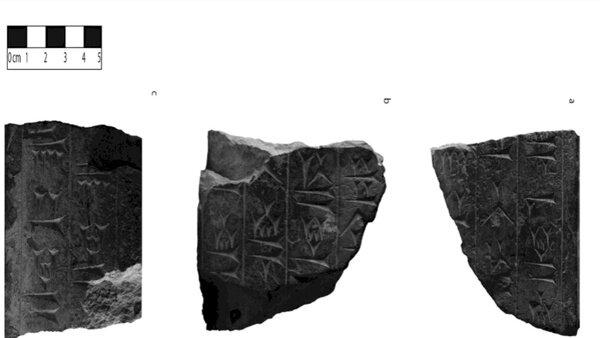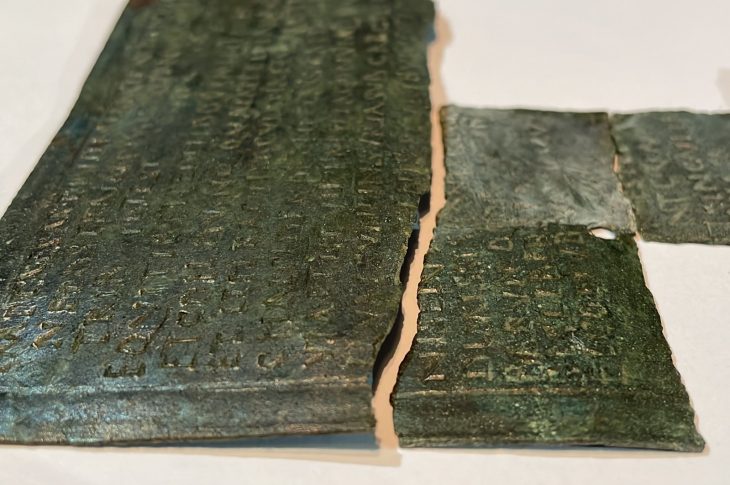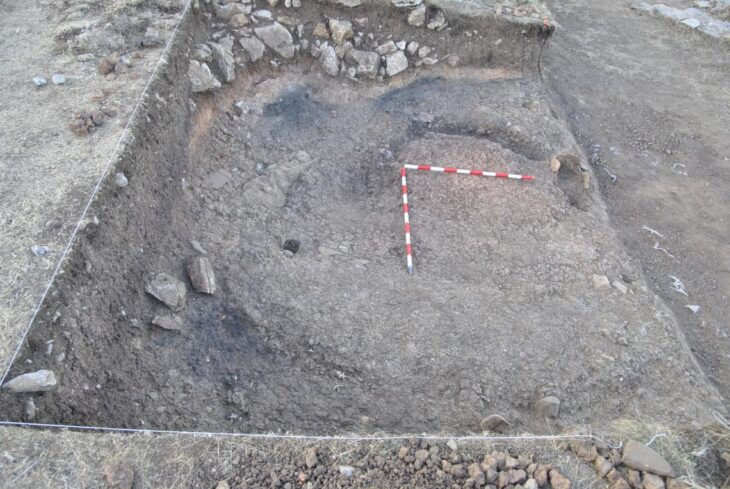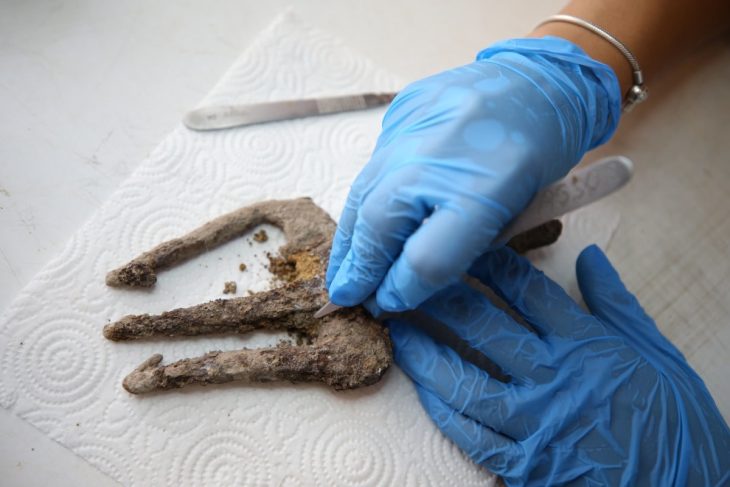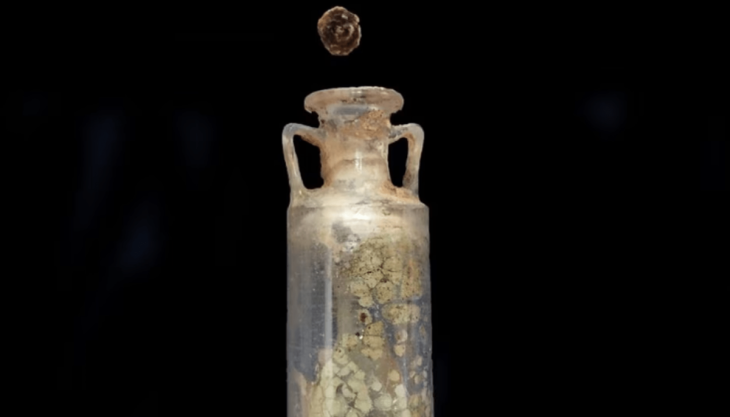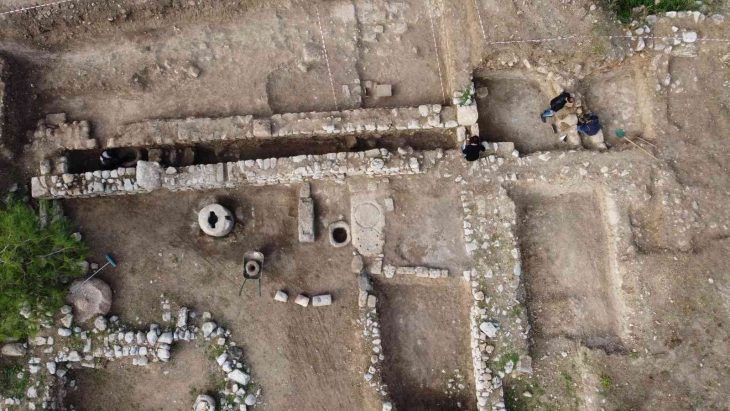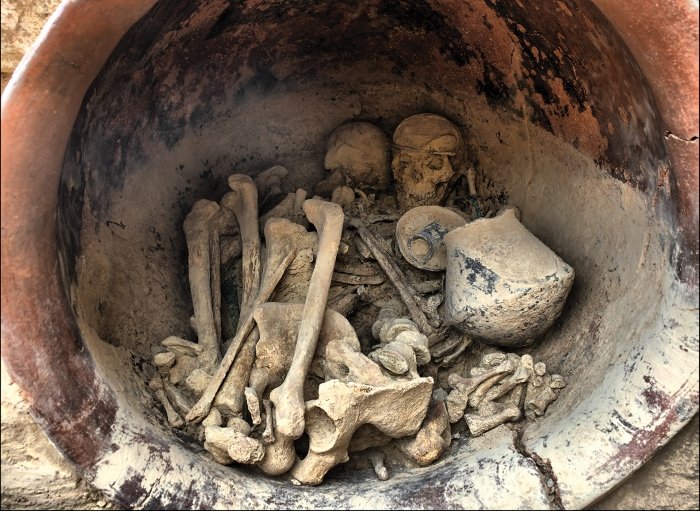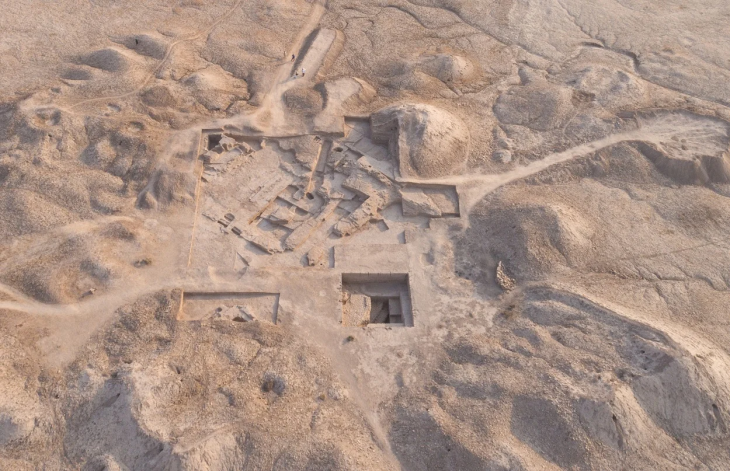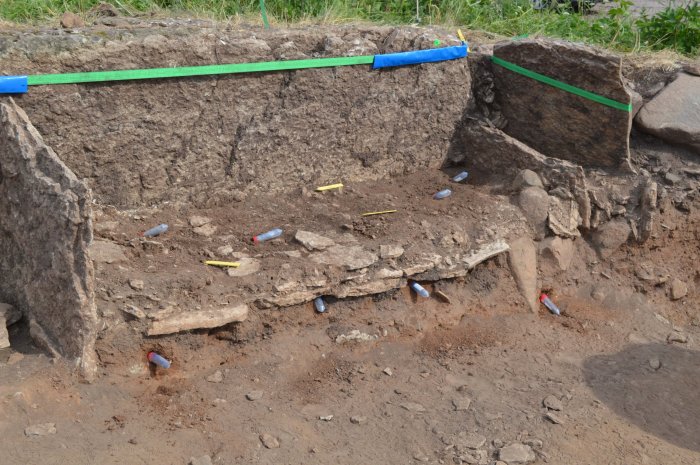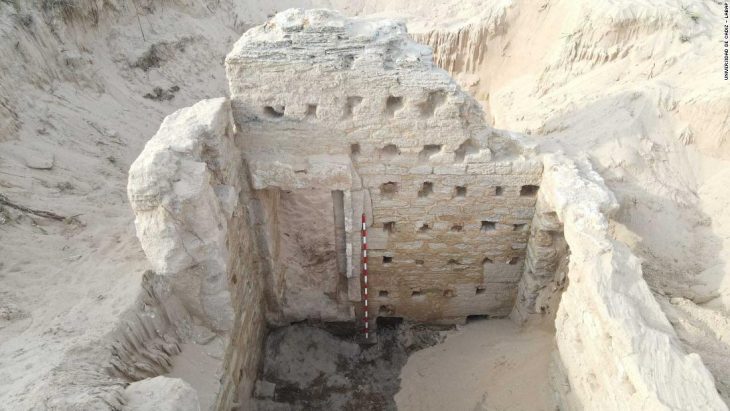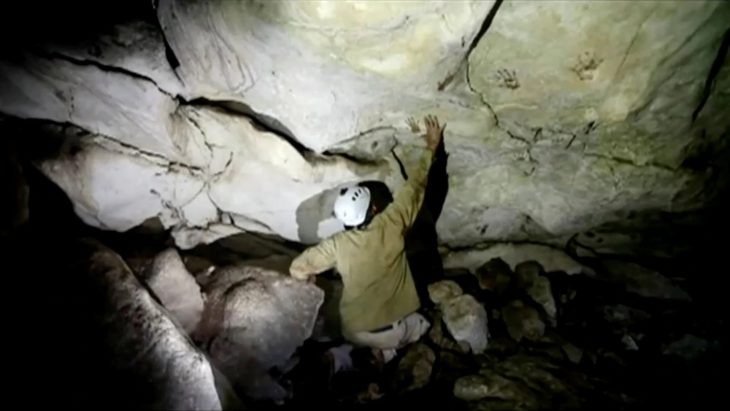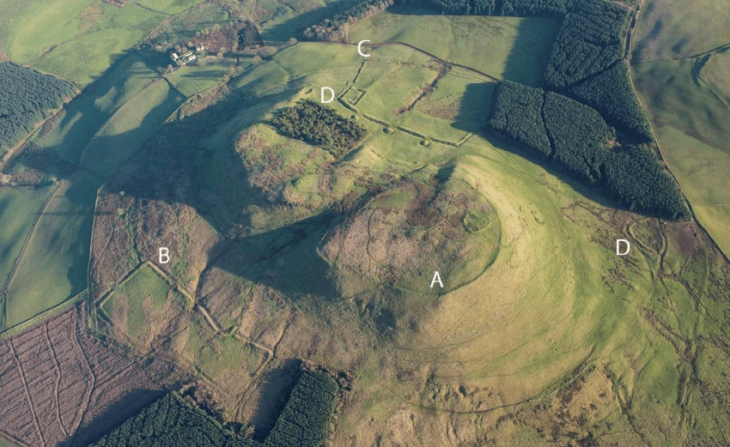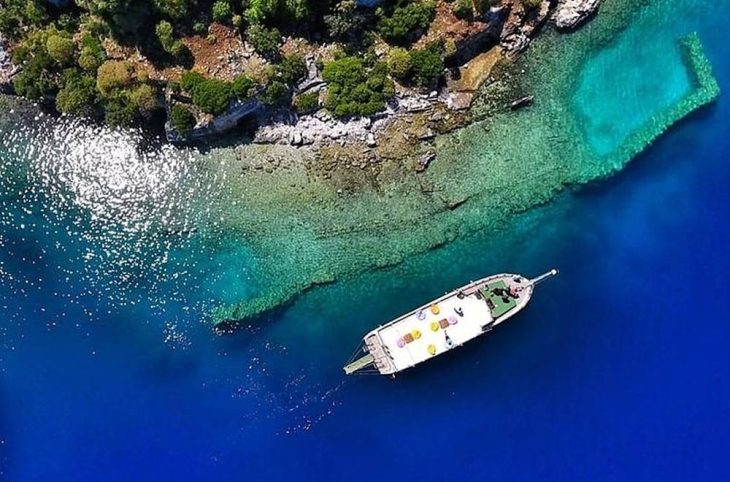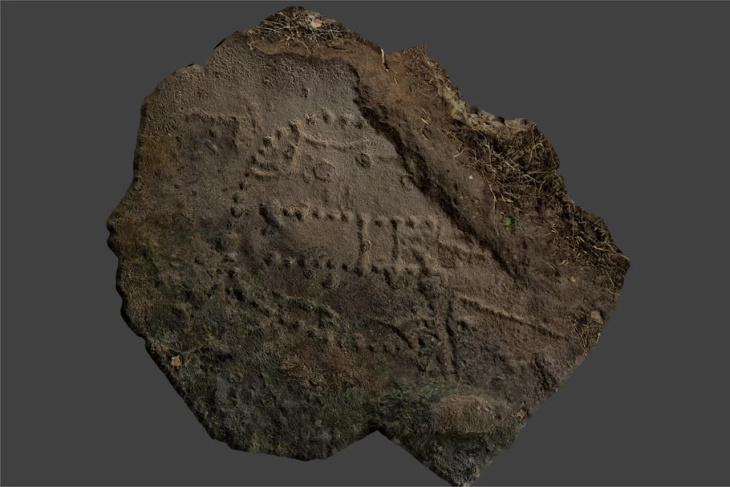During the classification and documentation project of inscribed objects and fragmentary inscriptions in the Persepolis Museum reserves, experts discovered a fragment of an Elamite inscription attributed to Xerxes the Great.
“A large part of the text of this inscription is, in fact, a copy of the inscription of [the Achaemenid king] Darius I on both sides of the entrance to the tomb in Naghsh-e Rostam, and parts of this inscription were discovered during an excavation led by [German archaeologist and Iranologist Ernst Emil] Herzfeld in an area called Fartedaran,” IRNA quoted archaeologist Soheil Delshad as saying on Thursday.
“The Persian version of the inscription was one of the first Achaemenid inscriptions that were studied and published by Iranian scholars, and now, after about 55 years, a piece containing the Elamite version of the inscription is also being published by Iranian scholars for the first time,” Delshad explained.
According to the inventory of the Persepolis Museum, a similar fragment was found in 1949, south of the Palace of Xerxes (west wing of the so-called Harem building).
As mentioned by Encyclopedia Iranica, Elamite clay tablets were discovered in Persepolis in 1933-34 and 1936-38 by the archaeological expedition of the Oriental Institute of the University of Chicago. They belonged to administrative records kept by agencies of the Achaemenid government during the reigns of Darius the Great, Xerxes, and Artaxerxes I.
The first group of the texts was found in the Fortification area at the northeastern corner of the terrace platform, hence their designation as “Persepolis Fortification Tablets.” The find consisted of over 30,000 tablets, whole or fragmentary, of which 2,120 texts have already been edited and translated by Richard T. Hallock, while the rest remain unpublished. The documents were drafted between the 13th and the 28th regnal years of Darius I, that is, from 509 to 494 BC. Although all were found in Persepolis, they originated from a large area of Persis and Elam, and some were written in Susa.
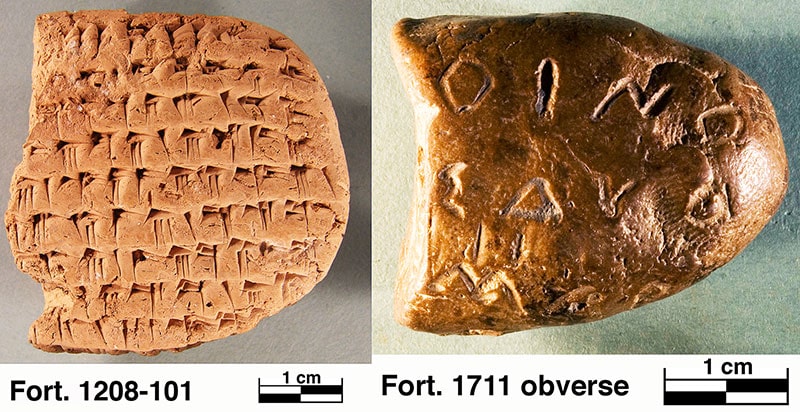
The second group of the tablets was discovered in a northeastern room of the Treasury of Xerxes; hence they are conventionally called “Persepolis Treasury Tablets.” They date from the 30th year of the reign of Darius I to the 7th year of the reign of Artaxerxes 1 (i.e., 492-458 BC). In all 753 tablets and fragments were discovered, and of these, 128 have so far been published. A large number of the fragments are too worn out or broken to afford connected texts and meaningful readings.
The Fortification Tablets include many records of transactions (chiefly concerned with the distribution of foodstuffs, management of flocks, and provisioning of workers and travelers) at locations throughout most of Persis and eastern Elam, and probably at some locations to the northwest and southeast of those areas. The records drawn up at those sites were sent to a central office at Persepolis. The Fortification texts also include many records compiling and tabulating information from similar registrations into accounts covering many months, relatively large areas, or both. These compilations were made in the offices of Persepolis itself. The tables vary in size, shape, and format. Many of them are small in format and record single transactions or single groups of transactions in outlying areas.
The Persepolis texts also constitute a valuable source for the study of the Old Iranian lexicon, since they contain many Iranian words and names in Elamite garb. Of the approximately 1, 900 names in the texts, one-tenth are Elamite and a small number Babylonian, while the rest (nearly 1,700) are Iranian.
It is worth mentioning in passing that a Babylonian private legal document drafted at Persepolis in the time of Darius I has been preserved among the Fortification tablets. One Babylonian document has also been found among the Treasury tablets. It records the payment of state taxes by several Medes in 502. Finally, a short inscription scrawled in Ionic letters has been found among the Fortification tablets.
The Achaemenid [Persian] Empire was the largest and most durable empire of its time. The empire stretched from Ethiopia, through Egypt, to Greece, to Anatolia (modern Turkey), Central Asia, and to India.
The royal city of Persepolis ranks among the archaeological sites which have no equivalent, considering its unique architecture, urban planning, construction technology, and art. Persepolis, also known as Takht-e Jamshid, whose magnificent ruins rest at the foot of Kuh-e Rahmat (Mountain of Mercy) is situated 60 kilometers northeast of the city of Shiraz in Fars province.

